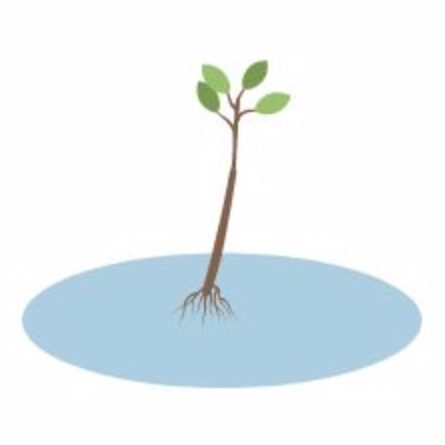
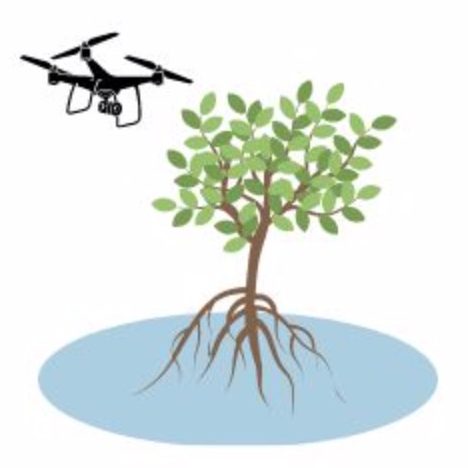
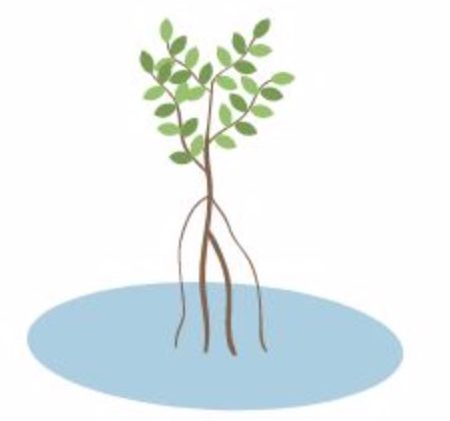
Mangrove Science: Conservation & Restoration

Mangrove ecosystems are vital for biodiversity, coastal protection, and climate resilience across the Caribbean. At the Perry Institute for Marine Science (PIMS), we take a holistic approach to mangrove conservation and restoration, integrating research, multiple types of restoration efforts, and innovative monitoring techniques to protect and rejuvenate these critical habitats.
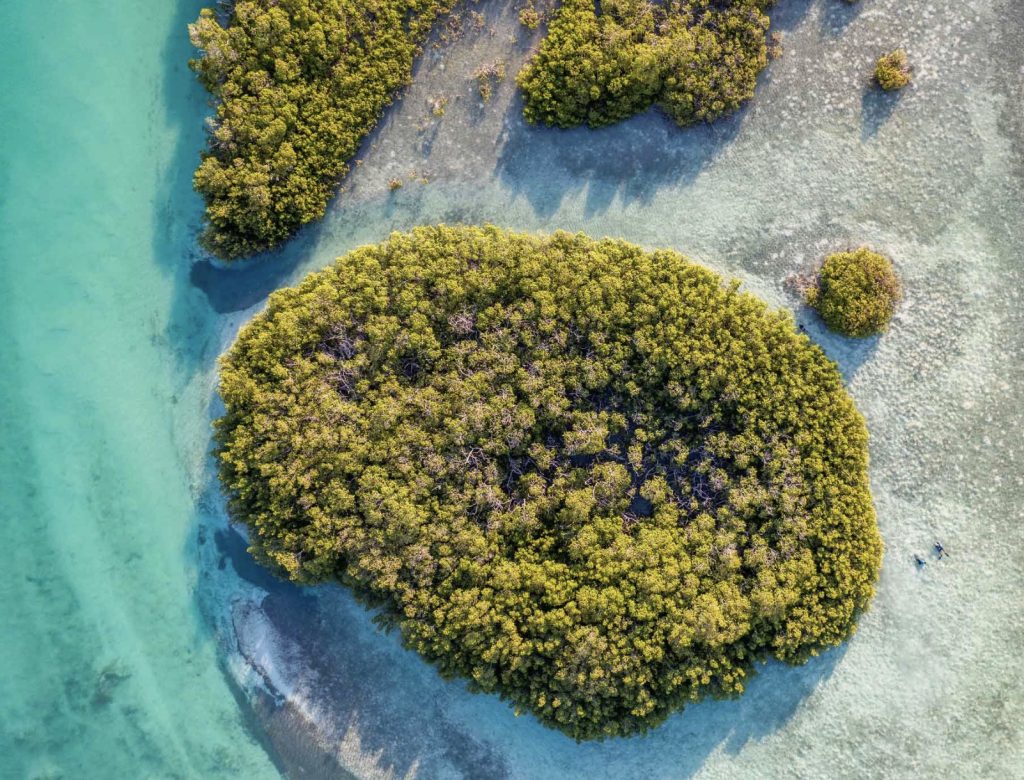
Research

Our research encompasses both natural and social sciences to better understand the importance of mangroves and how to address their threats.
We study the ecological role of mangrove swamps, the biodiversity they support, and their contributions to coastal resilience and carbon sequestration.
- What Are Mangroves? Mangroves are a group of salt-tolerant trees and shrubs that thrive in coastal intertidal zones. In the Caribbean, there are three main species:
- Red Mangroves (Rhizophora mangle): Recognizable by their distinctive prop roots, red mangroves grow in deeper waters and provide critical stabilization and protection for coastal areas. They are essential for the sustainability of mangrove ecosystems due to their role in coastal protection and habitat formation.
- Black Mangroves (Avicennia germinans): Known for their pneumatophores (specialized roots that stick out of the water to absorb oxygen), black mangroves typically inhabit slightly higher elevations than red mangroves. They contribute significantly to mangrove growth and resilience.
- White Mangroves (Laguncularia racemosa): Usually found at higher elevations compared to red and black mangroves, white mangroves lack specialized roots but have salt-excreting glands on their leaves. They are crucial for maintaining the overall health and diversity of mangrove ecosystems.
- Critical Ecosystems
- Mangrove ecosystems form vital links between land and sea habitats, serving as nurseries for a variety of wildlife, including economically valuable fish and shellfish species that migrate to coral reefs. Mangroves act as natural barriers against storm surges, hurricanes, tsunamis, and coastal erosion. They sequester carbon up to four times more effectively than terrestrial forests, playing a crucial role in mitigating climate change. Mangrove ecosystems also support livelihoods through popular recreational activities like bonefishing, kayaking, and snorkeling, enhancing tourism, providing jobs, and stimulating the local economy.
We investigate how local communities interact with mangrove ecosystems, their use and values, and the socio-economic benefits mangroves provide. Gathering perspectives from local communities about mangrove use, values, and changes over time helps in planning and implementing sustainable mangrove restoration methods. We’ve conducted community surveys across The Bahamas and hosted workshops to understand local perceptions about the importance of mangroves.
Restoration

Science-Driven Mangrove Restoration
Mangrove restoration involves rehabilitating and reestablishing degraded or destroyed ecosystems. Our approach includes a range of techniques tailored to specific environmental conditions and biological interactions within mangrove ecosystems.
Using propagules from the same geographic region to preserve genetic integrity. For instance, distributing red mangrove propagules collected from the northern Bahamas to areas impacted by Hurricane Dorian to stimulate natural regeneration.
Reestablishing natural water flow in areas where it has been disrupted. For instance, installing culverts in causeways on Grand Bahama to restore water flow and improve mangrove health.
Supporting science behind replacing “gray infrastructure” with nature-based solutions that leverage the natural ability of mangroves to buffer storms and reduce impacts on communities.
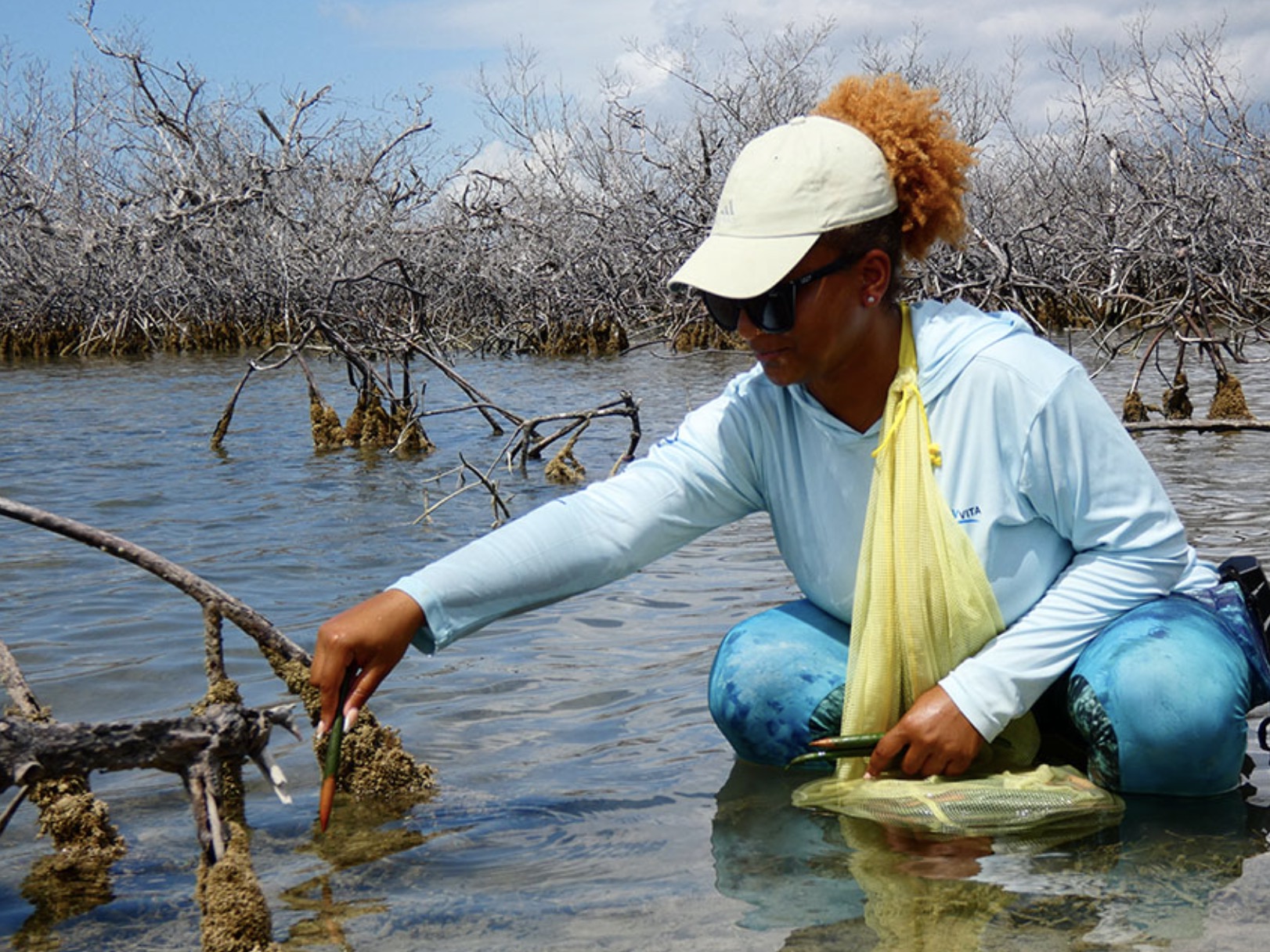
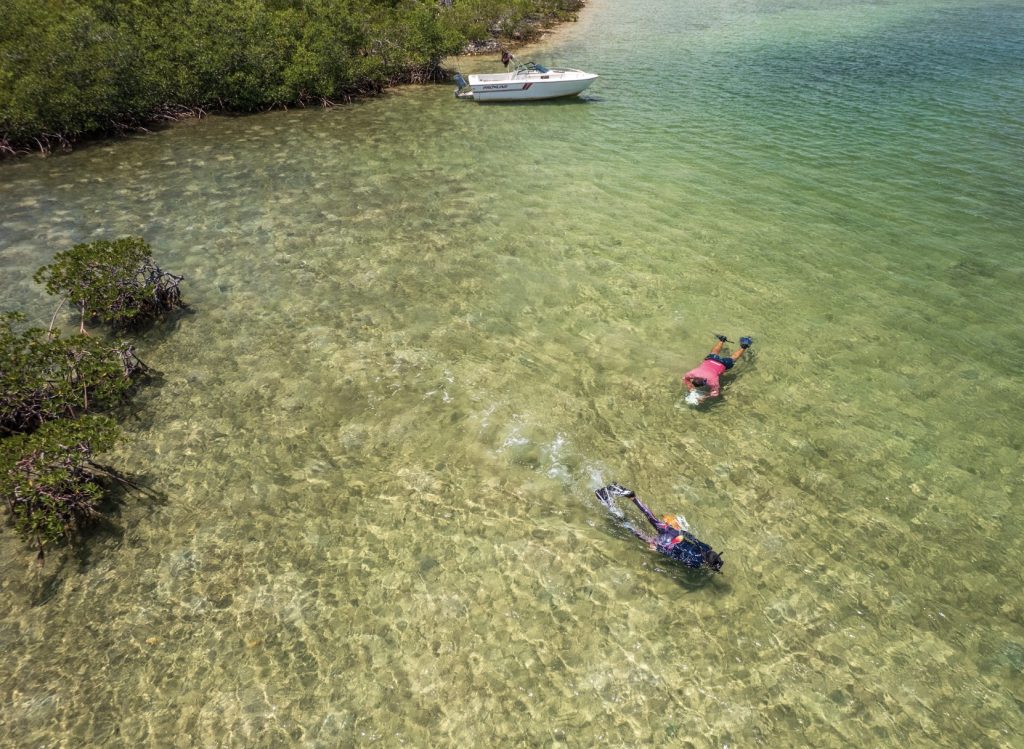
Monitoring

Innovative Monitoring Techniques
We employ advanced technologies and methodologies to monitor mangrove ecosystems, ensuring the long-term success and sustainability of restoration efforts.
Our scientists conduct in-water surveys to assess underwater habitat quality and fish populations, crucial for understanding mangrove ecology and its role in supporting marine life. We conduct annual surveys across the Little Bahama Bank to track the health of benthic ecosystems and the diversity and abundance of fish species over time in areas affected by Hurricane Dorian.
We monitor water quality parameters like temperature, salinity, pH, chlorophyll, and dissolved oxygen to ensure optimal conditions for mangrove growth. An example includes ongoing water quality monitoring in mangrove restoration sites in the Exumas.
We utilize multispectral mapping drones to create maps with centimeter-level detail, capturing mangrove height, biomass, and plant health metrics. These surveys are essential for assessing the health of mangrove forests and tracking the progress of mangrove habitat restoration projects. To date, we’ve mapped thousands of acres of mangrove habitat beginning in 2020 across Andros, New Providence, Grand Bahama, and Abaco, helping us to understand the health trajectories of these vital ecosystems.
Our Projects

Dive Deeper
PIMS is involved in numerous mangrove restoration projects across the Caribbean. Click on the links below to learn more about our ongoing efforts.
- The Bahamas: Our projects in The Bahamas focus on replanting mangroves post Hurricane Dorian, hydrological (or blocked creek) restoration, and green infrastructure initiatives.
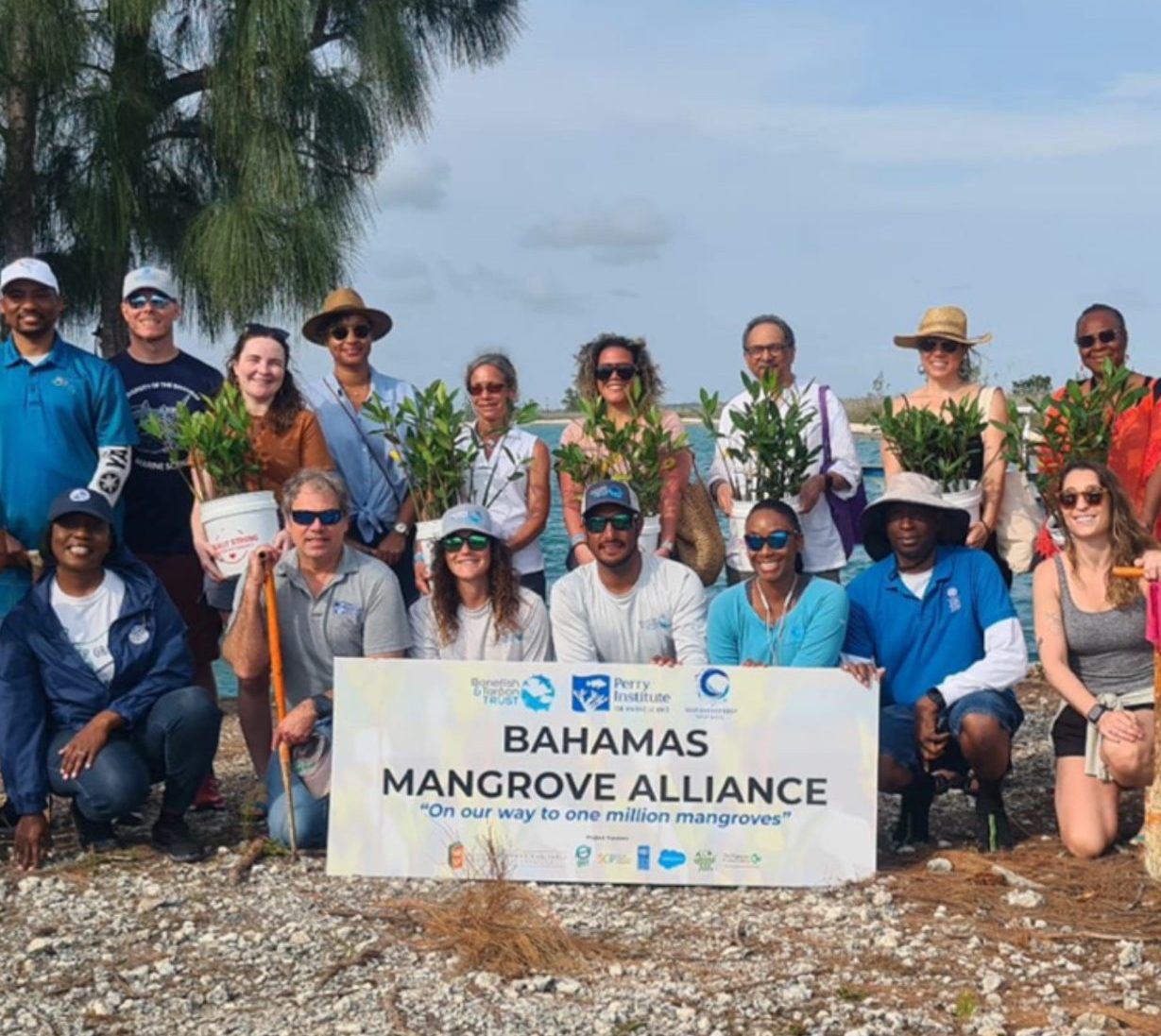
Research

PIMS leads the development and implementation of mangrove research initiatives in The Bahamas. Our goal is to demonstrate the extensive benefits of mangrove conservation for education, recreation, economy, and science throughout the region.
Join Our Coralition

Subscribe to our newsletter to stay updated on our latest research missions, captivating stories, and exciting job opportunities.
